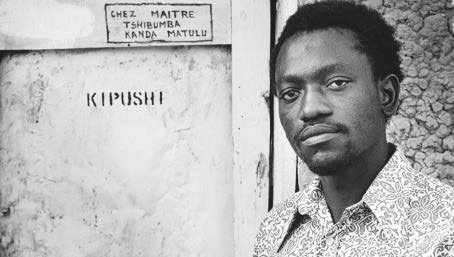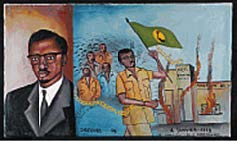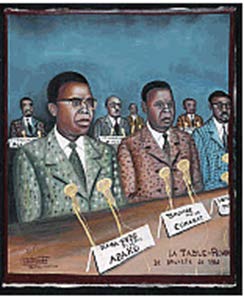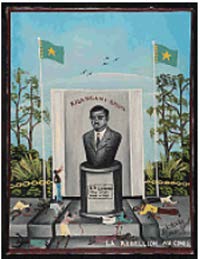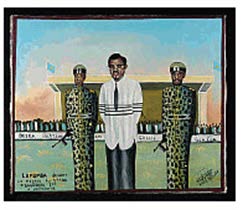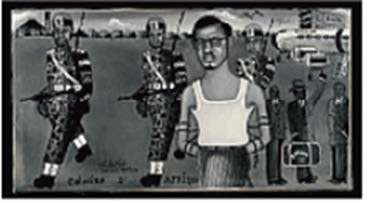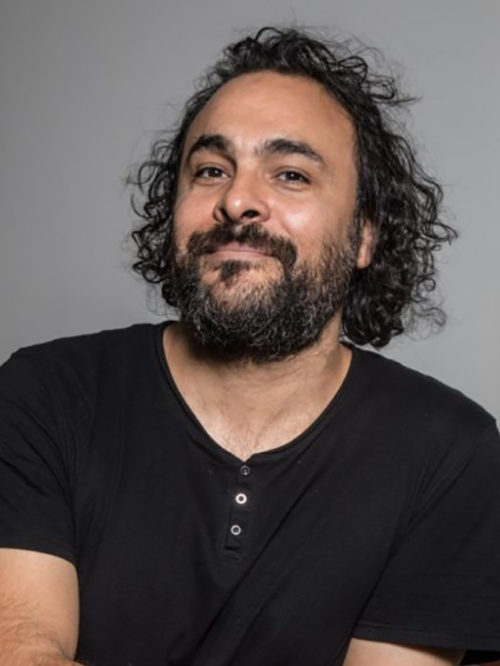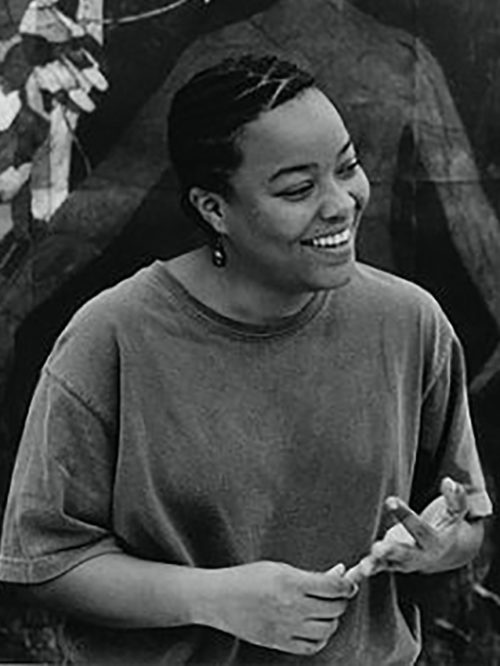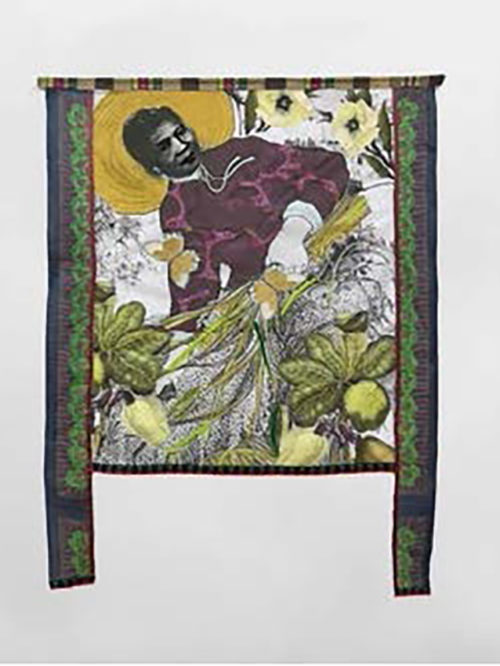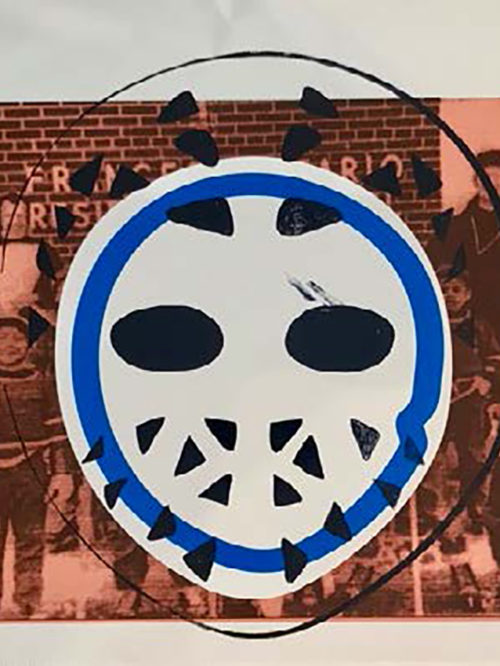Tshibumba Kanda Matulu
Portrait of Patrice Lumumba; on the right, Lumumba with a flag, leading the demonstration in Leopoldville on 4 January 1959 after his speech.
Round table conference in Brussels with Kasavubu, Tshombe, Lumumba and others.
After his arrest, Lumumba is being shown to the people at the King Baudouin Stadium.
After being beaten and handcuffed, Lumumba is transported by a Sabena plane to Shaba, where three gendarmes lead him to prison.
The bloody uprising in Kisangani (Stanleyville) with numerous victims in front of a monument to Lumumba.
Lumumba is declared a national hero by Mobutu.
Acrylic on canvas, 1973/74
Nationaal Museum van Wereldculturen, NL
European colonialism was arguably at its most atrocious in the Congo, which was ruled by the Belgian monarch King Leopold II. According to current estimates by historians, more than 10 million Congolese died under the vicious colonial regime of the Congo Free State (1885-1908) – about half of the population at the time. After major international campaigns against Leopold II regarding the cruel conditions under which “red rubber” was extracted, it became a Belgian colony from 1908. When the pressure on the Belgian colonial government increased at the end of the 1950s and the mass demonstrations could no longer be stopped, Patrice Lumumba, a vehement opponent of colonial rule and one of the founders of the party “Mouvement National Congolais Lumumba”, emerged as the bearer of hope for the Congolese. With his party, he won the parliamentary elections on 25 May 1960, serving as the first prime minister of the independent Congo from June to September 1960. His assassination, which was assisted by US intelligence and the Belgian government, is still considered one of the biggest unsolved criminal cases in the history of post-colonial Africa. Upon his death, Patrice Lumumba became a political myth and an icon of resistance.
Tshibumba Kanda Matulu, an artist from the Democratic Republic of Congo considered one of the most important representatives of popular painting, aimed to capture the people’s view of Congo’s turbulent history. A member of the movement himself, Tshibumba frequently worked on historical and political themes. In the 1970s, he produced a series of 101 paintings in which he told Congolese history from the people’s perspective – in particular, the story of the freedom fighter Patrice Lumumba. Matulu disappeared in 1981 and has not been found since.
Declaration of the Independence of the Congo
Original title: Proclamation de l’Indépendence du Congo
Length: 13:30 min.
On 30 June 1960, at the celebration of Congo’s independence, Belgium’s King Baudouin made a condescending speech praising the alleged good deeds of King Leopold II. Going against the protocol, the newly elected Prime Minister Lumumba took the floor and settled accounts with Belgium. His response was a blazing avowal of his beliefs in which he accused the former colonial masters of violent oppression and described the colonial system as a form of slavery. Congolese and Belgian politicians as well as diplomatic representatives from many other countries were present at the ceremony. Six months after this historic speech, with which Lumumba had raised great hope, the outspoken prime minister – the greatest hope of the young independent country – was assassinated on 17 January 1961 with the help of US intelligence and the Belgian government.
Tshibumba Kanda Matulu (born in 1947 in Lubumbashi, Congo disappeared 1981 in Congo) was a Congolese painter. The artist illuminates the turbulent history of the Democratic Republic of Congo chronologically and in detail, in a relatively simple, almost cartoon-like style, often with added explanatory lines of text. In 2000, the Tropenmuseum in Amsterdam dedicated an exhibition to Kanda Matulu, and in 2017 the series “101 Works” was shown at documenta 14.


